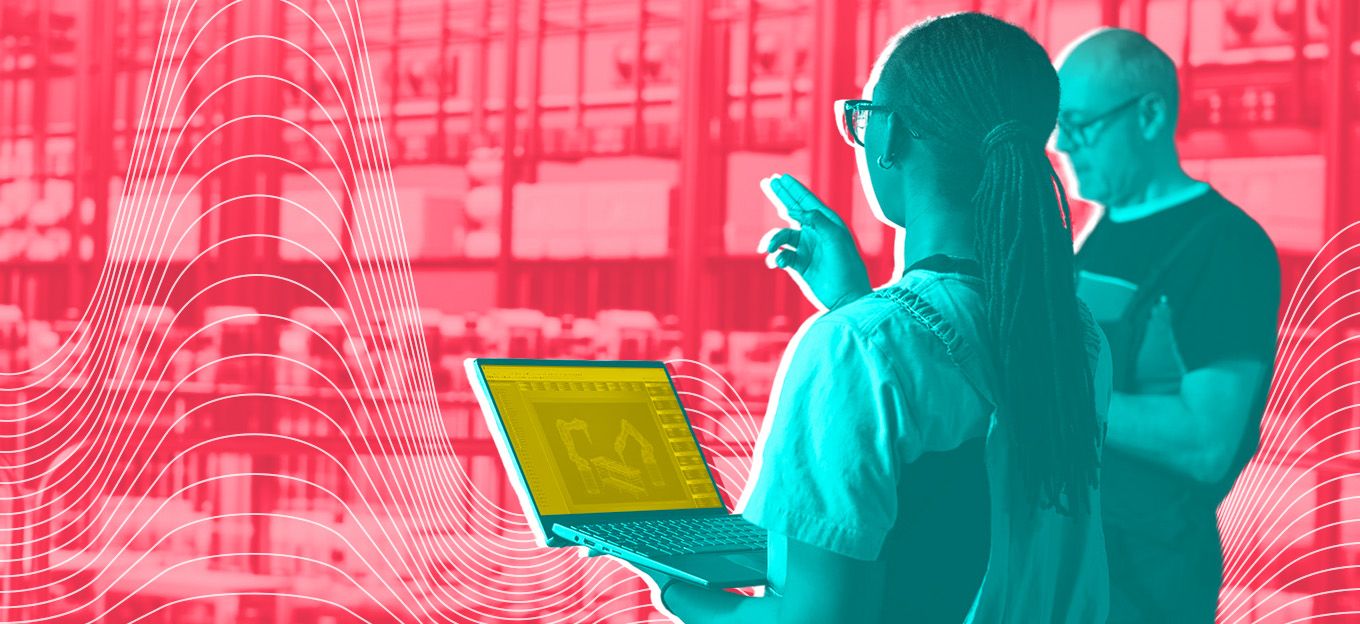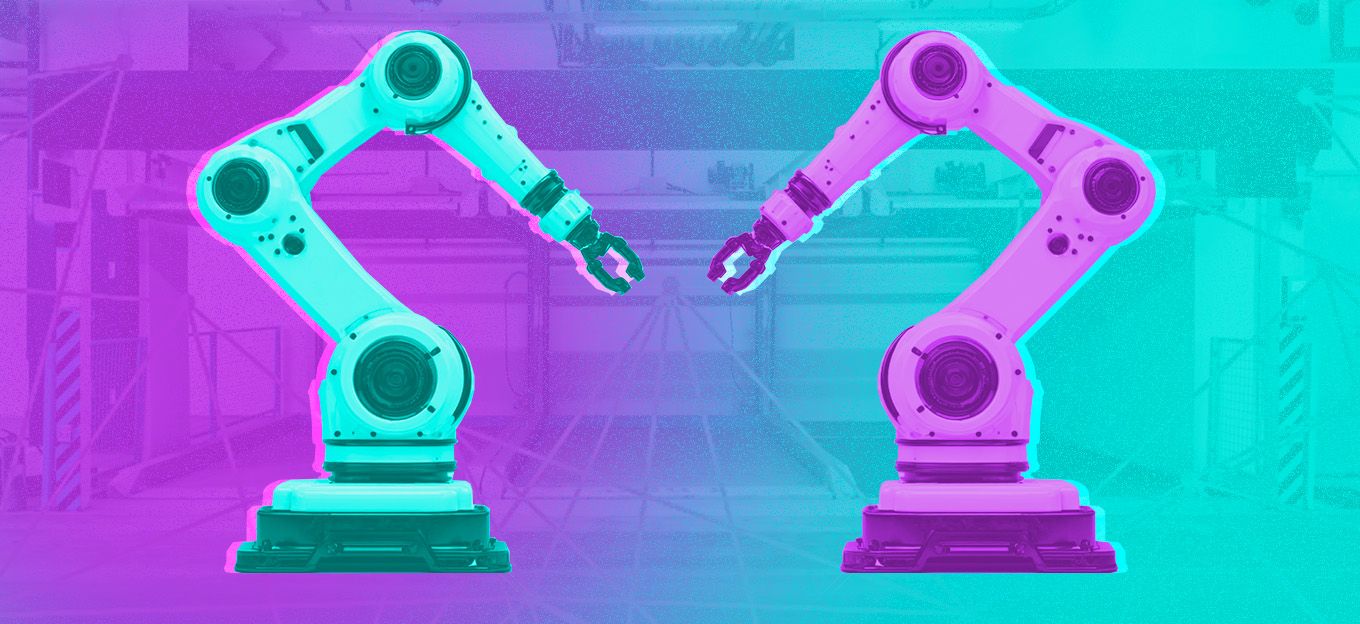Swarm Bot Series Part Two: Real Applications for Swarm Robotics Applications
Swarm Bot Series Part Two: Real Applications for Swarm Robotics Applications
- Last Updated: December 2, 2024
Benjamin Shepardson
- Last Updated: December 2, 2024



Swarm intelligence goes far beyond what current IoT applications are offering the world in the way of futuristic improvements and gee-whiz prototypes seen in many of today’s more progressive cities and homes.
As you’re about to see, they're perfect for certain types of business and industry applications, making the world safer, better, and easier in an exciting number of ways.
IoT is about to undergo a huge leap forward, but hardly anyone knows about it. It’s called “swarm robotics,” and it involves bees and other social insects changing the world.
Tackling Dangerous Tasks
Swarm-bots can be used to tackle dangerous tasks to reduce or eliminate the risk for humans. Based on the level of danger, there's potential for loss of robot individuals, necessitating a focus on fault tolerance of the swarm. Some examples include:
- Search and rescue
- Cleanup of toxic spills
- Demining
When High Flexibility and Scalability Are Needed
There are tasks where it's difficult or impossible to estimate at the beginning the number of resources needed to accomplish the task. For example, if you're allocating resources for managing an oil spill or leak, you cannot foresee the oil output or temporal evolution. This makes resource allocation doubly difficult.
Flexibility and scalability should be the focus of the swarm-bots deployed to handle such tasks. You can add or remove robots as needed to give the right amount of resources according to the evolving requirements of the job. Some applications include tracking, cleaning, and specific search and rescue scenarios.
Unstructured Tasks/Environments
Swarm robotics may be useful when it's necessary to accomplish tasks within very large or informal environments. In these cases, you don't have the infrastructure to control the robots, such as a global localized system or a communication network.
Swarm-bots fit the bill because of their ability to work autonomously without any infrastructure or centralized control system. Examples include:
- Extraterrestrial or underwater excursions
- Demining
- Surveillance
- Search and rescue missions
Dynamic Environments
Certain environments may change rapidly over time, such as after natural disasters like hurricanes or earthquakes. Buildings may collapse, altering the original layout of the environment and creating unforeseen hazards. Here, swarm robots that are customized for high levels of flexibility will be needed.
Examples include:
- Search and rescue
- Patrolling
- Disaster recovery tasks
How Swarm Robots Get Their Power
It only makes sense to have swarm robots powered by batteries. Experts recommend lithium polymer batteries because they provide high current output and energy density. They are also lightweight, flexible in format, and safe to use, as they resist overcharging. However, these types of batteries can be dangerous if not treated properly, so they must be protected from over/under-voltage, overcurrent, and overheating.
For a large robot swarm, it's impractical to design them to be manually recharged. Instead, a module can be written to teach the robot to find a docking station for recharging when it runs low on power.
Consider that finding and docking at a charging station is a higher-level task than the swarm-bots typically do. Therefore, apart from the module, charging stations should be designed to be as intuitive as possible. For example, the inclusion of high-speed, two-directional communication between the computer and bot during recharging would be useful.
Part of the battery includes charging and discharging management to ensure battery health and safety. The discharge management circuits must be installed in the swarm bot for apparent reasons. However, the charging management circuitry may be placed outside the bot (in the docking station's computer system).
There are upsides to external deployments, such as more straightforward bot design, which makes them cheaper to acquire. But if the aim is to maintain a bot’s autonomy within the swarm, then it must be equipped with all necessary tools to enable proper functionality.
Charging is central to a bot's functionality, so it makes sense to have both charging and discharging management systems within the bot.
How Swarm Robots Connect to the Cloud – Swarm Computing
For swarm robotics, you have autonomous micro-machines that need to communicate with each other and with the cloud when necessary. This evolution that brings together cloud computing with swarm robotics is called swarm computing, and it's still in its infancy.
Swarm computing brings together cloud principles with network principles, to give rise to higher functionality and flexibility of swarms or IoT ecosystems. It focuses on increasing data sharing and mobility, as well as allowing temporary control of devices connected to the cloud.
The most visible advantage of investing in cloud robotics will be the ability to delegate more difficult tasks to higher-intelligence agents in the cloud. Cloud cooperation should enable swarm robots to, for instance, connect to the more intelligent bots in the cloud when meeting more difficult challenges. There should be real-time data processing, support, and response, whether by humans or robots, to inform the autonomous robots' actions/responses.
Right now, we still need lots more extensive research to determine how to operate, manage, and deploy highly distributed cloud services. This will demand high levels of innovation and automation but will be essential given the proliferation of IoT and swarm intelligence.
Real-World Applications of Swarm Robotics
Even though swarm robotics and IoT is a relatively new field, only a few years old, different organizations are already diving headfirst into the field. Below are some examples of companies and organizations using swarm robotics to power various aspects of their operations.
DOD Micro-drones for Military Use
The military application of swarm robotics perhaps the most significant of all. The US Department of Defense has already demonstrated one of the largest micro-drone swarms in China Lake, California. The swarm showed advanced swarm intelligence, such as decision-making, self-healing, and adaptive formation flying.
Perdix drones, as they are called, work as a collective organism, sharing a distributed brain that enables them to adapt to each other and make decisions to benefit the entire swarm. Without a leader, the swarm adapts gracefully to drones leaving or entering the team.
Ideally, the Pentagon hopes to use these small, cost-effective, and autonomous drones to accomplish the same things they used large, expensive drones to do. However, they were keen to mention that drones will not replace humans in the future battlefield. Instead, they would equip humans with information to make better decisions faster.
RoboBees
Inspired by biological phenomena, Wyss Institute researchers are developing RoboBees prototypes, which can perform various disaster relief and agriculture-related tasks. A RoboBee is very small, half the size of a paper clip, and weighing 0.1 grams or less. Its flight is powered by "artificial muscles," which are materials that contract when exposed to voltage.
Some RoboBee models can swim underwater or fly, as well as "perching" on surfaces using static electricity. Researchers wanted to create micro-aerial, autonomous vehicles that could achieve self-directed flight and work coordinately when in large groups.
RoboBees can be used to assess infrastructural damage after a natural disaster or act of terrorism, as well as locate victims for smart rescue efforts.
Cost-Effective Modular Robots
A research team at the Department of Mechanical Engineering at the University of Toronto developed a modular robot called mROBerTO. Modular robots are bots that can autonomously change shape and perform different functions.
Such abilities are essential to swarm robotics research, where thousands of small bots are needed to test out behavior algorithms and functionalities. For these miniature robots to be cost-effective, it would be necessary to make sure each unit costs as little as possible. Otherwise, the cost of research would be prohibitive, holding back the advancement of the field.
Enter mROBerTO, a modular robot that can be made from commonly available and affordable materials. mROBerTo can be used for a variety of applications calling for miniature swarm robots, although its primary purpose was to give swarm robotics researchers cheap physical tools to test out swarm behavior algorithms.
These robots are designed in such a way as to enable researchers to be able to change hardware parts to test our different algorithms, shapes, and functions using the same robot skeleton. The modular millirobots are made such that changing one section/module doesn't affect the functionality of the other sections.
Future of Swarm Robotics Research
There are hundreds of possibilities for swarm robotics research across many different fields. Theoretically, the technology will be useful in areas where human intervention would be impossible (e.g., nanomedicine) or too dangerous (e.g., search and rescue, nuclear reactors, chemical plants, mines, etc.).
However, this will only be possible if researchers finds ways to build robot swarms cost-effectively. This is the line of thinking the makers of mROBerTO above adopted (although at $60 each, the cost of a swarm of 100 robots is $6,000, which is still high).
Similarly, most of the current robotics research has been carried out in controlled lab environments, which do not mimic real-world constraints. It will become crucial, then, to find ways to take swarm robotics out of the lab and into the real world, particularly since most applications will require high flexibility of the swarms in rapidly changing environments and without external intervention.
A joint team of researchers from the University of West England and the University of Bristol is currently working on techniques to develop autonomous discovery of suitable swarm strategies when swarms are deployed in real-life situations.
Future research in this area will involve using dynamic environments to test swarm robot responses and determine the designs that will be better suited to real-world applications.
Swarm Robots: How Much Is All This Going to Cost?
This is a complex question because the cost of a robot swarm depends on so many factors, like:
- Complexity
- Number per swarm
- Level of autonomy
- Level of flexibility/adaptability needed
For example, the University of Colorado wanted to acquire swarm robots called Droplets, which were self-charging and worked in groups of 100 or 1000. The estimated cost was $10,000 for just 100 Droplets in 2014.
It's easy to understand why, despite its value, swarm robotics research is still out of reach for many businesses. Typically, the people who make these robots are expensive – they are computer scientists, computer engineers, or electronic engineers with advanced degrees. The parts that make these robots – motors, cameras, sensors, etc. – are also expensive.
Final Thoughts
Swarm robotics is set to become one of the most significant technological advancements we’ll see this century. Its applications, particularly in disaster recovery and management, are endless and powerfully significant.
Of course, swarm robotics research is still in its infancy for many applications, subject to different challenges you’ve learned about here. In time, as better technology becomes cheaper and more accessible, we will see swarm robotics becoming part and parcel of business operations and decision making — for the greater good.
The Most Comprehensive IoT Newsletter for Enterprises
Showcasing the highest-quality content, resources, news, and insights from the world of the Internet of Things. Subscribe to remain informed and up-to-date.
New Podcast Episode

Moving Past the Pilot Phase in IoT and AI
Related Articles





